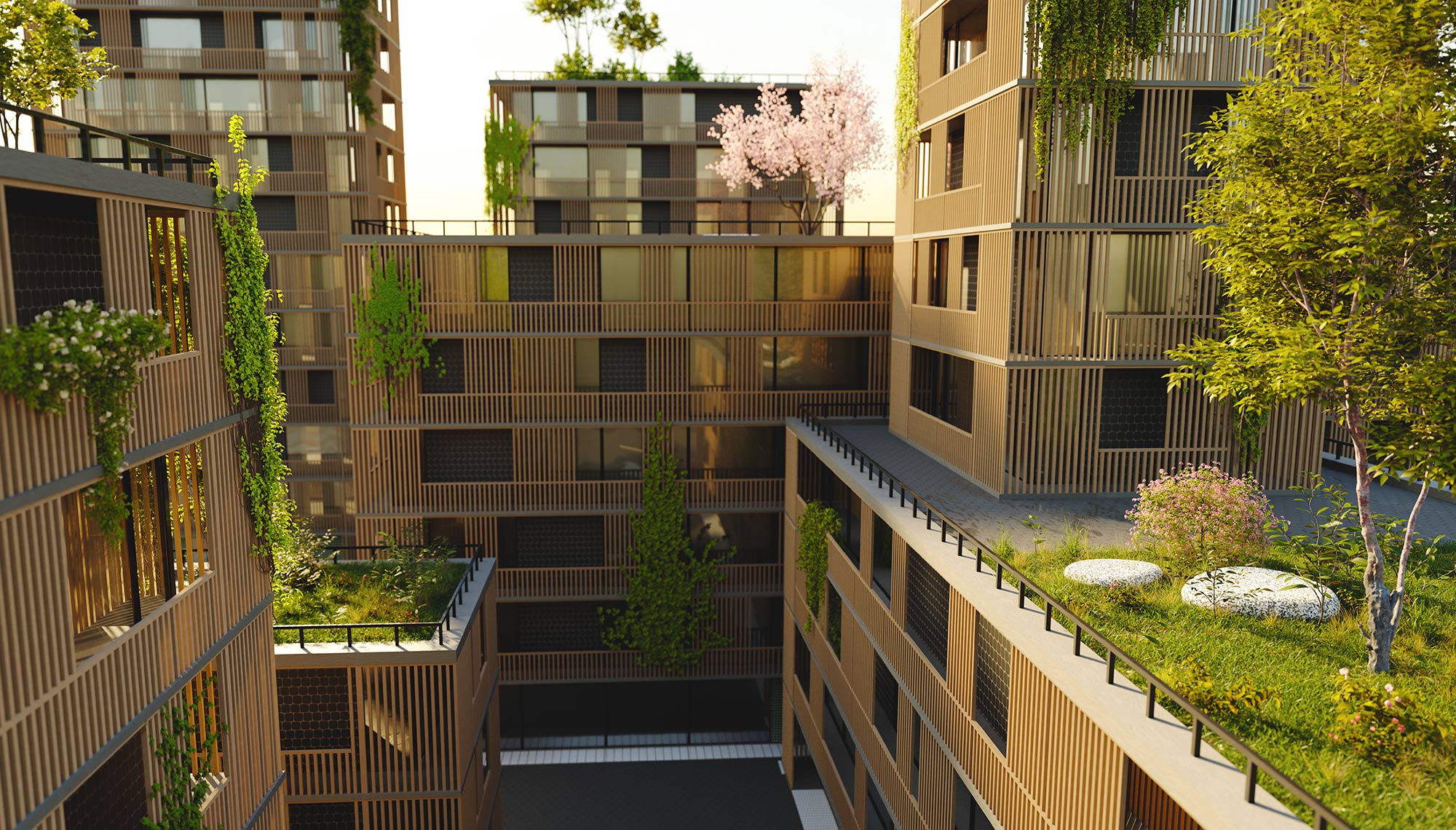Achieving Sustainable, Healthy, and Resilient Buildings with LEED, WELL, and PRAs

24 Sep 2024
Creating Sustainable, Healthy, and Resilient Spaces helps ensure our Buildings Support both People and the Environment
As global awareness of environmental and health issues rises, the building and construction industry is evolving to meet these challenges. Three significant frameworks that address these concerns are LEED® (Leadership in Energy and Environmental Design), the WELL Building Standard™, and Property Resilience Assessments (PRAs). Each uniquely shapes a sustainable future, focusing on environmental impact, occupant health, and building resilience.
LEED Certification for Sustainable Buildings
LEED certification, administered by the U.S. Green Building Council, has become a benchmark for sustainable building practices. It provides a framework that encourages building professionals—architects, engineers, and contractors—to implement technologies and design solutions that reduce a building's environmental impact. LEED-certified buildings are known for increased energy and water efficiency, and lowering carbon footprints and operational costs. Additionally, these buildings often enhance indoor environmental quality, boosting occupant health and productivity.
Acoustic performance, though not explicitly highlighted in LEED categories, is critical in achieving certification. Effective sound management contributes to occupant satisfaction by reducing noise distractions, which is particularly important in schools and healthcare settings. Proper acoustic planning, sound-absorbing materials, and optimized HVAC systems are essential for meeting LEED certification.
The WELL Building Standard for Healthy Spaces
The WELL Building Standard, developed by the International WELL Building Institute, shifts the focus from environmental impact to human health. Unlike traditional green building certifications, WELL® addresses the direct effects of indoor environments on the people who occupy them. It covers air quality, lighting, and comfort, aiming to improve cognitive function, sleep patterns, and overall health.
WELL certification involves rigorous documentation and performance testing to ensure that buildings meet high standards for occupant health. It is increasingly sought after by building owners for its potential to enhance property value and marketability. WELL-certified spaces are designed to promote better air, water and lighting quality, thermal and acoustic comfort, access to nutritious food, and opportunities for physical activity, thereby creating healthier living and working environments.
Property Resilience Assessments (PRAs) for Resilient Buildings
As homes, businesses, and neighborhoods face rising risks of extreme weather events, investors, lenders, building owners, developers, architects, engineers, and contractors who service the properties are navigating new challenges. PRAs are becoming essential for protecting what matters most. A PRA is a detailed evaluation that identifies a property's vulnerability to natural and climate-related hazards and suggests ways to enhance its resilience.
ASTM's upcoming guide for PRAs will outline a standardized three-stage process for evaluating physical assets: hazard screening to identify risks, vulnerability assessment to evaluate exposure, and resilience measures to address these risks. With rising insurance costs and tightening government regulations, PRAs are becoming increasingly vital for safeguarding properties and ensuring their long-term viability.
Resilience goes beyond enduring challenges; it encompasses the ability to withstand disruptive events and recover quickly. For our built environment, resilience involves key principles. A resilient building prioritizes the safety of its occupants during and after disruptive events, such as natural disasters or power outages. Its design and construction should limit damage, enabling quicker, less costly repairs and a faster return to normal use. Additionally, resilient buildings are designed to support the continuity of operations, aiming to resume normal activities as soon as possible.
Intertek: Your Partner in Achieving Sustainable, Healthy, and Resilient Buildings
By emphasizing environmental sustainability, occupant health, and resilience to climate risks in your building design, these strategies collectively contribute to a more sustainable and resilient future. Partnering with experts like Intertek helps you navigate these standards effectively, ensuring your projects achieve the highest levels of performance and sustainability.
For more information on how Intertek can assist you, click here.
To watch our latest healthy building video series featuring Alan Scott, click here.
